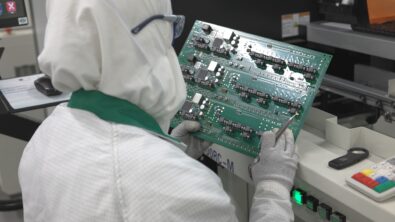The New Digital Manufacturing Imperative and its Impact on the Culture of the Manufacturing Enterprise

Manufacturing Moving Forward
As we begin to ramp back up our manufacturing enterprises, we are discerning the indelible impacts from our recent global disruptions that will define our journey forward. As an industry, we have recognized the potential benefits of digital manufacturing, and the necessity of technology to help us be more agile and responsive. Our experience with economic downturns like the market crashes of 2001 and 2008, and natural disasters like the volcano eruption in Iceland in 2010 and the earthquake and tsunami in Japan in 2011, highlighted the need for digital transformation.
The pandemic, however, has created an exclamation point driving us to accelerate our planning. The impact of this massive disruption was tangible, painful, unforeseen, and sometimes unrecoverable for the business. We experienced vulnerability at an excruciating scale. Today, digital manufacturing has become an urgent competitive imperative for manufacturers across the globe.
As we map our journey, we must consider more than just the systems and processes that underpin the transformation to digital manufacturing. The strain on the manufacturing enterprise from the pandemic was both operational and psychological. We must also consider the impact on the people who will lead and work in this new environment. Let’s look first at the new operational landscape ahead.
The New Face of Manufacturing
What are the types of manufacturing capabilities that allowed some manufacturers to adapt to rapid market change while other manufacturers declined or closed during the massive disruption of COVID? Here are the key characteristics that separated these two groups:
- Ability to open manufacturing safely, enabling remote collaboration with factory operations.
- Ability to get new and different products to market quickly, which requires a seamless integration across product design, process design and physical production.
- Rapid reconfiguration of lines and plant layouts, supported by digital simulation of configuration and commissioning.
- Flexible, on-demand involvement in factories, with adaptive planning and scheduling, accommodating rapid change in resources.
- Adjustment to supply chain rebalancing, with multi-sourcing, sustainable planning, and simulation of alternatives.
In short, those that had a digital infrastructure could accelerate planning in the digital realm, so that transfer to the physical production realm was much more rapid and cost effective. The majority of the problems had been solved on a computer before any physical resources had been consumed.
We call this virtual planning side the “Digital Twin” – the digital representation of the physical product, part, production process, machine, line layout, plant design. These digital twins are connected by a “Digital Thread,” where data is stored, contextualized, and shared among the various engineering and operational teams. Manufacturers that had these types of systems implemented were ready for the most severe of disruptions, and weathered the pandemic better than their counterparts who had not made the digital transformation leap.
The reality is that manufacturers have access to these systems today. We have complete Digital Twins of Product, Process, and Performance, connected by our Digital Thread. We have full Plant Simulation, allowing us to design quickly for new constraints (such as social distancing). We have new strategies for creating nimble and adaptive supply chains. Whenever we have an issue in the supply chain, we can simulate alternatives and understand the implication on production based on multiple scenarios.
The Impact on the Culture of the Manufacturing Enterprise
There is another kind of impact that the pandemic has created which is less obvious – the impact on the perception and outlook of the people involved in the manufacturing enterprise. Massive disruption brings uncertainty and unpredictability, which most people react to with fear. And the fact that the most important resource of any manufacturing enterprise, the people, were put at risk was an entirely new problem.
For the manufacturing executive, the physical presence of workers in the factory became uncertain. This proposition was completely unforeseen. If you can’t bring people into the factory, how do you manufacture products? All of a sudden, they had to create a strategy to lower the risk of people constraints. Of course, the alternative is an acceleration towards automation. While executives have an overwhelming sense of urgency, digital transformation isn’t something that can be thrown together.
Accelerating digital transformation must be coupled with risk mitigation of disruption that change brings. These executives are rapidly turning to experienced partners that have a proven roadmap, experience with a broad array of transformations, and dedication to the success of the manufacturer. These valuable partnerships are serving to reduce the psychological stress that many manufacturing leaders are experiencing.
For the manufacturing worker, the uncertainty was palpable. Will I have a shift? How long can I do the shift? How many times will I be called? Will work be sustained? Will it change?
So how can we change the culture from fear back to optimism? Emerging technology will allow more and more workers to do their job remotely and ensure sustained plant operations. Supervisors can monitor analytics from home. Virtual reality (VR) can expand the “presence” of experts in many locations simultaneously. Factories can be designed for consistent factory presence of operators, accommodating social distancing if needed.
Cloud technology, high-speed internet, congruent data exchange – all of these capabilities will become increasingly critical. Of course, there will be a transition phase, a movement towards the “lights out factory in a mixed mode. We must be certain to bring our workers along the journey with us, to allow them to prepare and embrace the change, and shift their fear to optimism.
The Shift toward Optimism
We are in the early stages of our recovery in manufacturing. The digital transformation imperative is clear. It is time for renewed optimism. We can face accelerated digital transformation together, with proven technology available today. The digital transformation journey should not be faced with dread. It is an exciting proposition, one that has delivered both expected and unexpected benefits to manufacturers in all industries, across the globe. While the operational efficiencies, financial return, and quality improvements are clear, the psychological impact should not be ignored. All of us are in this together, and it can be a journey we enjoy.


